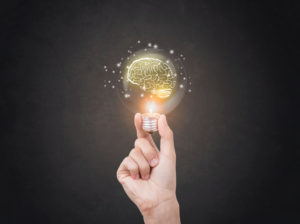
Wrapping a good message inside a great story help people connect, engage and retain. For instance, most TED Talks work because the speakers are using their personal stories to help deliver their message. Every TED Talk shares a common trait: they contain emotional components that grab our attention from the first sentence to the last. They make it nearly impossible to stop watching. You pay attention, and you stay connected because you want to see how the story ends.
Whether the presenter uses humor, fear, empathy or tragedy, TED Talks are the direct opposite of most business presentations you get at a conference, seminar, or boardroom. I call those “sleeping pill presentations” – data packed, mind-numbing PowerPoint presentations that challenge every person in the audience to remain awake. Becoming engaged in the topic is nearly impossible.
According to John Medina, author of the book Brain Rules, “The brain doesn’t pay attention to boring things.”1 He is right. The better you are at capturing the attention of your audience, the more they will learn and isn’t the overall goal? Consider your own behavior. When sitting through a sleeping pill presentation, do you pay attention to the speaker or, maybe, your smartphone?
I’m not an expert on the brain, so I will rely on John Medina’s research to help explain how storytelling affects our brains. According to John, “emotions get our attention.”2 When we pay attention, we capture and retain details.
Here’s an example from my past that probably resonates with you. I was attending a Stephen Covey presentation at the Hyatt Hotel in downtown Columbus sponsored by Franklin University on September 11, 2001. I left the ballroom to use the restroom and walked by a group of people huddled around a small TV and overheard them saying, “a plane just crashed into one of the Twin Towers.” That was over 16 years ago. I can’t tell you what I was doing 16 hours ago. That entire day and weeks later were packed with so much emotion, that many of us will never forget.
Medina states that “emotionally charged events are better remembered – for longer, and with more accuracy – than neutral events. When your brain detects an emotionally charged event, your amygdala (the part of your brain that helps create emotions) releases the chemical dopamine into your system. Dopamine greatly aids memory and information processing. Think of it like a Post-it® note that reads “Remember This.””3
During an emotionally charged event we feel fear, anger, sadness, joy disgust, surprise, and other automatic responses. My focus is on one emotion: surprise. One way of looking at the emotion of surprise is including something unexpected, like humor. I will discuss this in greater detail later in the book, but humor goes a long way in helping to keep the attention of an audience.
Jeffrey Gitomer said, “The end of laughter is followed by the height of listening.”4 Think back to your college days. What class did you enjoy attending? Why? It was probably because the teacher used stories and humor to capture your attention and get you involved as an active listener. When I was working on my Master’s Degree in Accountancy, I had to take a corporate income tax class. I was dreading that semester because in my mind that was the pinnacle of boredom. It turns out, that class was the one I always looked forward to and enjoyed the most. The reason was Professor David Jaeger. He made tax fun, which is a feat in and of itself! He told stories, used humor and I can still see his “boxer shorts” tie (another story for another day).
Do I remember everything I learned in his class? Of course not, that was over 20 years ago. However, I do remember his name, I do remember his tie, and I do remember that I enjoyed his class. Very different than my memories of my auditing course. I don’t remember who taught the class, I don’t remember anything about them or the class. I do remember that when I passed the CPA exam, the section that I passed first was taxation and the part I struggled with, and finally passed, was auditing.
Apparently, I had a lot of Post-it® notes in my brain on the subject of taxation and very few about auditing. Later in this chapter, I will discuss how to craft a story but for now, remember to include emotionally charged stories in your presentations. Help your audience and their brains pay attention to you and what you are saying. Your stories will become the Post-it® notes they can recall just when they need them.
